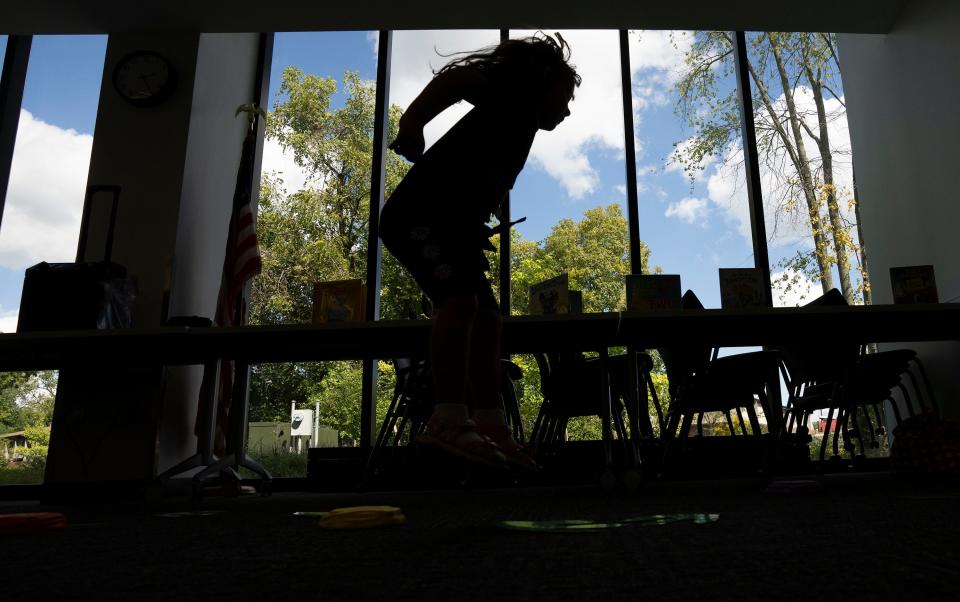First new levy in 13 years would boost Columbus Metropolitan Library revenue by nearly 50%

Voters have never rejected a property tax levy for Columbus Metropolitan Library, though they've only had three previous opportunities to do so: the first 15-year levy in 1986, a renewal in 2000 and a new levy with an increase in millage in 2010.
The decade-or-more interval between each may have made the requests to voters easier to justify than a typical 5-year levy, a shorter term that some argue forces a taxing body to justify their need for tax increases.
The library is asking voters to approve a new 1.5-mill continuing levy on the Nov. 7 ballot that would generate $39 million annually and would have no expiration.
That means that the library's current revenue of about $81 million will swell to about $120 million. The new levy will cost property owners $52.50 per $100,000 of property value in its first year of collections.
So why does the library system need $39 million more each year to operate? The answer is largely due to inflation eating into the stable stream of funding, said Lauren Hagan, the library's chief financial officer.
Over time, "the revenue from the levy generates a surplus in the operating fund in the early years of the term of the levy and then a deficit in the later years. So new revenue is necessary, to avoid a deficit," Hagan said. Without the new levy, there would be a deficit of $11 million by the end of 2026, library projections show.
The library's 2023 budget shows revenues of $81.7 million compared to expenses of $83.6 million.
The 2010 continuing levy, which passed by an almost two-to-one margin, was supposed to support operations through 2020. But library officials cite "strong fiscal stewardship" for helping to squeeze an additional three years from it.
Franklin County property owners would pay for the levy, except for those in Bexley, Grandview Heights, Upper Arlington, Westerville, Worthington and Southwest District Library in the Grove City area, each of which have their own taxpayer-funded library systems.
Will rising home prices cost you more for the levy?
The housing boom and Franklin County reappraisals this year that on average are 40% higher do not correspond to a 40% increase in taxes. Ohio property owners pay taxes on 35% of the county auditor's appraised value of their property, meaning if your home is appraised at $100,000, you pay taxes on $35,000 in property value.

In fact, the voted millage is reduced in order to generate the same tax revenue for the taxing entity, thanks to the fairness policy resulting from Ohio House Bill 920.
If a home valuation has risen higher than the 40% countywide average, as did many in the Franklinton and the Near East Side areas of Columbus, there will be a greater rise in the library and the Columbus City school district's property tax, both of which are on the ballot.
What about all those new branches
Beginning in about 2012. the library board has repeatedly voted to use debt financing to rebuild or remodel all 23 branches, citing the region's population growth, need for community space in underserved communities and commitment to literacy, especially in Columbus' inner-city.
The new Gahanna branch opened earlier this year as part of the library's 150th anniversary celebration. Reynoldsburg's branch will open next year. The Barnett and Linden branches will be renovated and expanded shortly after. And new buildings are planned for Marion Franklin and Canal Winchester, each currently using other buildings.
Of the current debt of about $215 million in public library notes, 29% has been paid off. Refinancing has saved taxpayers more than $15 million, library officials say. In addition to borrowing, some operational funds and Columbus Library Foundation funds have also been used for the buildings.
The modern, glass-enclosed structures have been praised as beacons within many urban, underserved neighborhoods. The glass is for transparency, giving outsiders a visual reminder of the treasurers within, and helpful for security reasons.
"It's no secret that as the middle class is hollowed out, we see more and more people who are coming in for just very basic services," said library system CEO Pat Losinski. This includes after-school snacks, summer lunches, homework and job help and homeless assistance.
Losinski has said that each new branch has been carefully designed to serve not only patrons, but the community demographics
"If we're serious about equity, then communities that have a higher poverty rate need more," he said recently. "There's a reason (Karl Road branch) is as big as it is, because it's in the Karl Road neighborhood."

Coming out of the COVID-19 pandemic, with high inflation and population growth, "We're going to have an unspecified new demand. And like all levy-supported entities, at some point you've got to go back (to voters) ... you can't live on 13-year-old income," Losinski said.
'Competing' levy
Columbus City Schools also has a levy on the Nov. 7 ballot. The school district is asking voters to approve a 7.7-mill levy that would cost property owners $269.50 annually per $100,000 of appraised value.
That wasn't known earlier this year when the library conceived their levy, Losinski said.
"The schools issue was a little bit of a surprise. People did not see it coming. We certainly did not," said Losinski, who declined to predict how the levy will do.
"I can never think of a meeting I've been in, in 40 years ... where someone doesn't say this is a great time (for a levy). It's a challenging time for people in the community, and we respect that."
Consequences if not approved
Library officials say that Ohio's public library fuding declined during state budget shortfalls, and has been unreliable in recent years. In addition, they note that tax abatements that are granted to developers and businesses cause libraries, schools and other taxing districts to lose revenue.
If the levy fails, library officials say budget cuts will need to be made.
Officials did not specify whether programming, staffing among the library system's 800 employees or operational hours would be affected.
A lasting foundation
The new buildings, including the flagship Main Library, are symbolic of the library's strong foundation in an open and welcoming society, officials say. "Open to All" will continue to be the rallying cry.
"I think the library is held in really high regard in our community. People feel it is for everyone," said Losinski. "I always say if society worked as well outside of the library as it works within, we'd all be in a better place."
Libraries are data-driven and officials are quick to share annual usage, including 12.3 million items circulated, 3.9 million user visits, 605,000 cardholders and 1.9 million computer or wireless sessions. The library's 23 branches serve 10 public school districts.
"People are coming to us for a reason — because they know that our reputation is what we can deliver," said. Losinski. Success will come by "continuing to amplify the good work that we've done."
More information about the levy can be found on the library's website.
dnarciso@dispatch.com
This article originally appeared on The Columbus Dispatch: Columbus Metropolitan Library seeks levy to boost revenue nearly 50%

